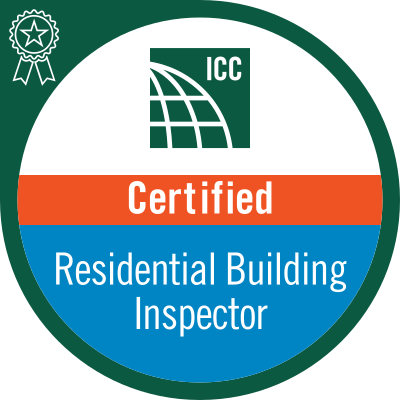Rodent Problem
by Nick Gromicko, CMI®
 urine, feces or saliva — or indirectly — by coming into contact with fleas or other insects that have fed on an infected rodent host. Inspectors should use extreme caution and wear appropriate personal protective equipment when entering a home that is known to be infested with rodents.
urine, feces or saliva — or indirectly — by coming into contact with fleas or other insects that have fed on an infected rodent host. Inspectors should use extreme caution and wear appropriate personal protective equipment when entering a home that is known to be infested with rodents.- hantavirus pulmonary syndrome;
- hemorrhagic fever with renal; syndrome;
- Lassa fever;
- leptospirosis;
- lymphocytic chorio-meningitis;
- plague;
- rat-bite fever;
- salmonellosis;
- South American arenaviruses; and
- tularemia.
- babesiosis;
- Colorado tick fever;
- human granulocytic anaplasmosis;
- lyme disease;
- murine typhus;
- scrub typhus;
- rickettsialpox;
- relapsing fever; and
- Rocky Mountain spotted fever.
Rodents also pose a danger to the integrity of the structures they inhabit. They have strong teeth and they may chew through structures to gain access to food sources. The best method for preventing exposure to rodents is to prevent rodent infestation in the first place, according to the Centers for Disease  Control (CDC) and the U.S. Environmental Protection Agency (EPA).
Control (CDC) and the U.S. Environmental Protection Agency (EPA).
- chewing or clawing sounds that come from inside or outside a home. Noises may even come from the roof, as tree-dwelling rodents may try to gain access to a home from above the living space;
- stale smells coming from hidden areas;
- evidence of structural damage that can provide entry points into the home;
- evidence of gnawing and chewing on food packaging;
- nesting material found in small piles, such as shredded paper, fabric or dried plant matter; and
- rodent droppings anywhere in the home, especially near food packages in drawers and cupboards, and under the sink.
- Keep food in thick plastic or metal containers with tight-fitting lids.
- Clean up spilled food right away, and wash dishes and cooking utensils soon after use.
- Keep outside cooking areas and grills clean.
- Always put pet food away after use and do not leave pets’ food or water bowls out overnight.
- Keep bird feeders away from the house. Utilize squirrel guards to limit access to the feeder by squirrels and other rodents.
- Use thick plastic or metal garbage cans with tight-fitting lids.
- Keep compost bins as far away from the house as possible.
- Dispose of trash and garbage on a frequent and regular basis, and eliminate clutter in and around the property to discourage nesting.
- inside, under and behind kitchen cabinets, refrigerators and stoves;
- inside closets near the floor’s corners;
- around the fireplace;
- around doors;
- around plumbing pipes under sinks and washing machines;
- around the piping for hot water heaters and furnaces;
- around floor vents and dryer vents;
- inside the attic;
- in the basement or crawlspace;
- near the basement and laundry room floor drains; and
- between the floor and wall juncture.
- in the roof among the rafters, gables and eaves;
- around windows;
- around doors;
- around the foundation;
- near attic vents and crawlspace vents;
- under doors; and
- around holes for electrical, plumbing, cable and gas lines.

- lethal traps, such as snap traps, that are designed to trap and kill rodents;
- live traps, such as cage-type traps, that capture rodents alive and unharmed, requiring that the rodents then be released or killed; and
- glue boards, which are low-cost devices that use sticky substances to trap rodents, requiring a further decision regarding disposal, since such traps are not lethal.
Rodenticides are products intended to kill rodents, and are typically sold as powders in bait and tracking form. Some rodenticides include:
- baits, which combine rodenticides with food to attract rodents. They may be formulated as blocks or paste and may be enclosed in a bait station;
- tracking powders, which are rodenticides combined with a powdery material. The powder sticks to the rodents’ feet and fur and is swallowed when the animals groom themselves. After consuming the chemical poison contained in the bait or tracking powder, the rodents die. Some rodenticides (including tracking powders) may be legally applied only by certified pesticide applicators because they may pose a risk to human health.
- Traps and baits should be placed in areas where children and pets cannot reach them.
- Products should be used according to the label’s directions and precautions.
- Only traps that are appropriate to the type and size of the targeted rodent should be used.
- Glue boards should be placed in dry, dust-free areas, as moisture and dust will reduce their effectiveness.
It is advisable to contact a professional exterminator to deal with more severe infestations, since rodents reproduce constantly and quickly.
In summary, rodent infestation poses a serious risk to human health, and extreme caution must be taken when eliminating the problem. This article is from InterNACHI and can be found at https://www.nachi.org/rodent-inspection.htm.
Schedule your home inspection with Red Horse Home Inspection of the Black Hills. Follow us on Facebook and Instagram.




Leave a Reply
Want to join the discussion?Feel free to contribute!